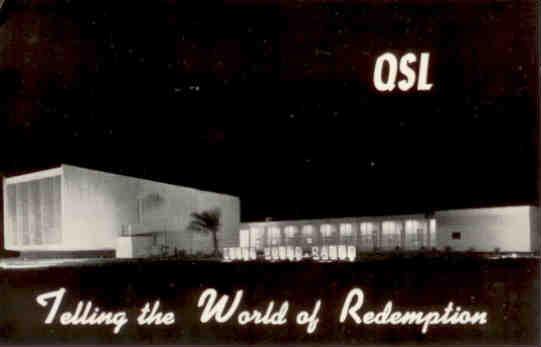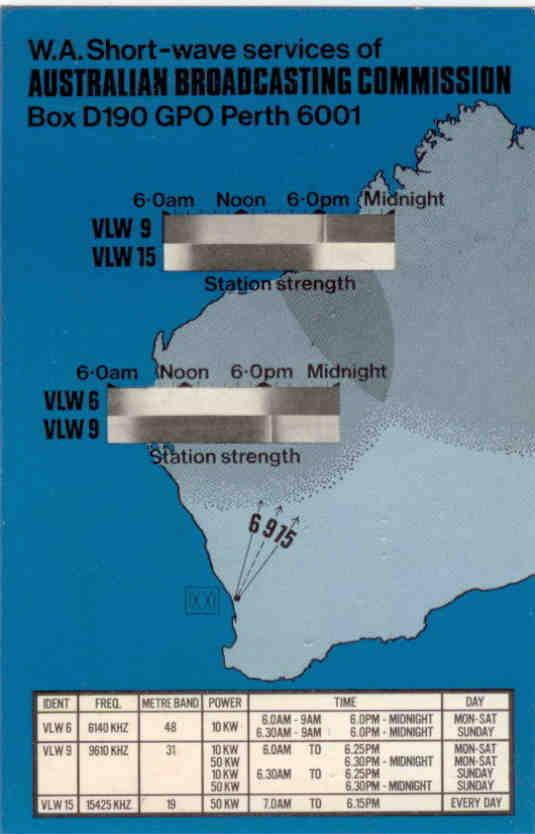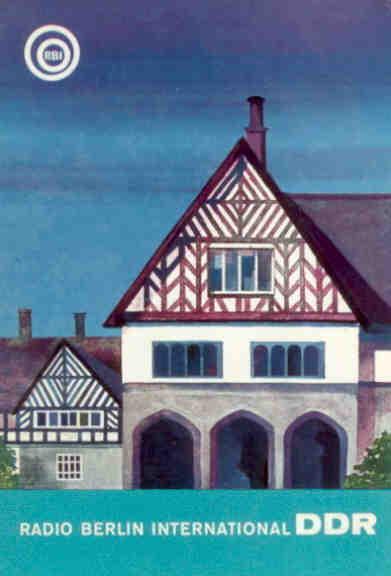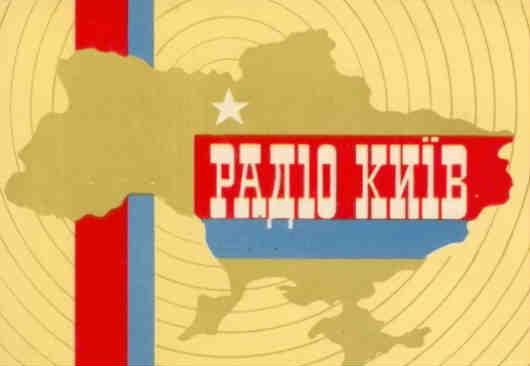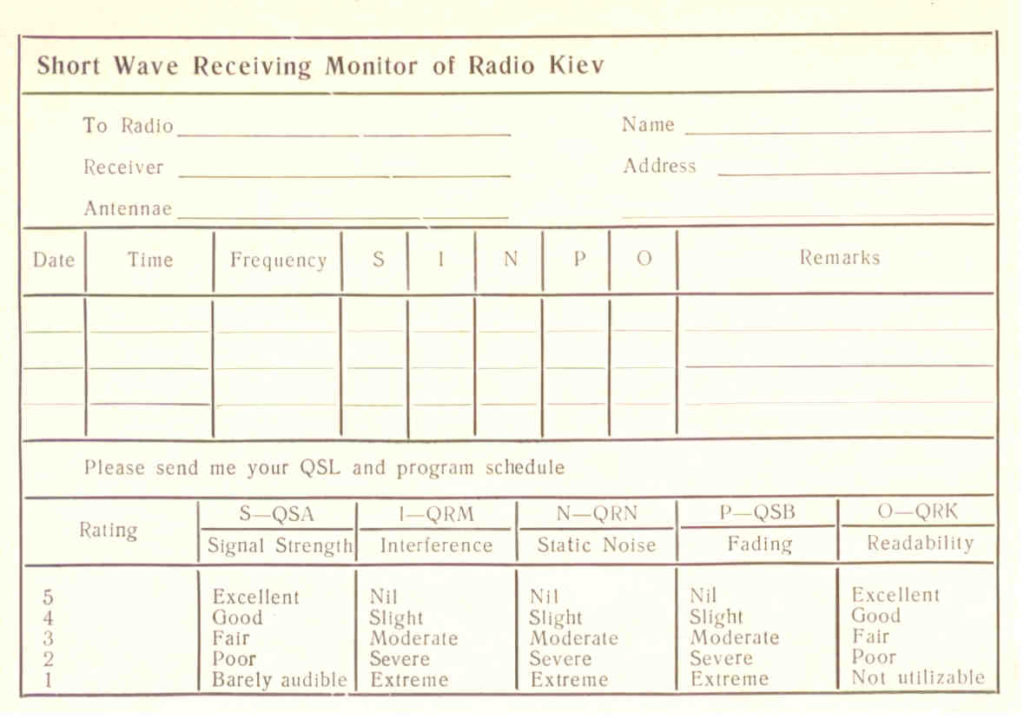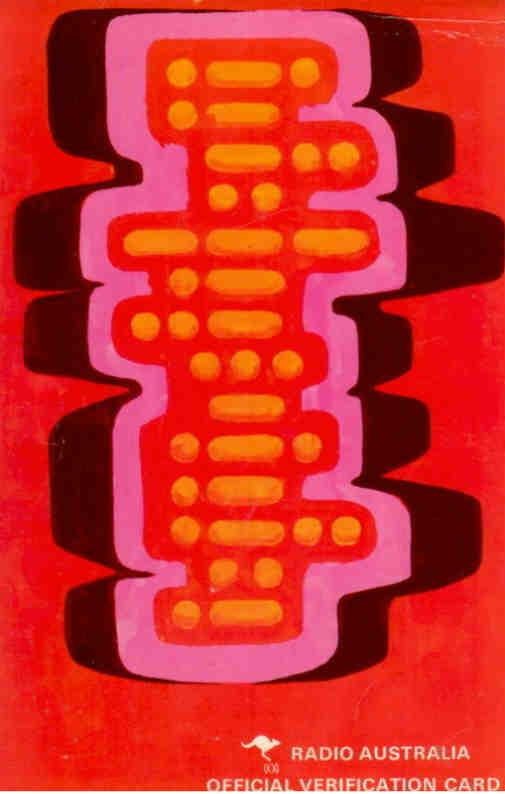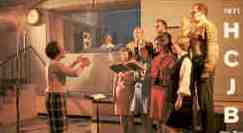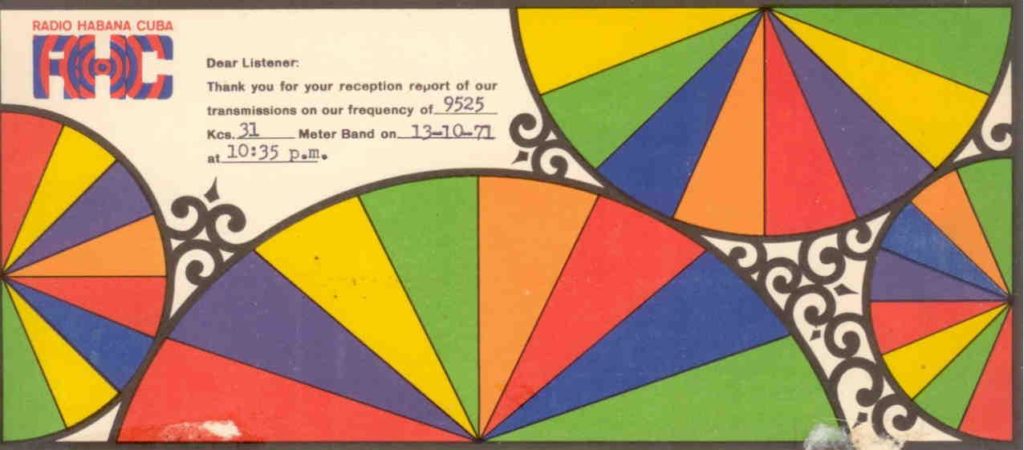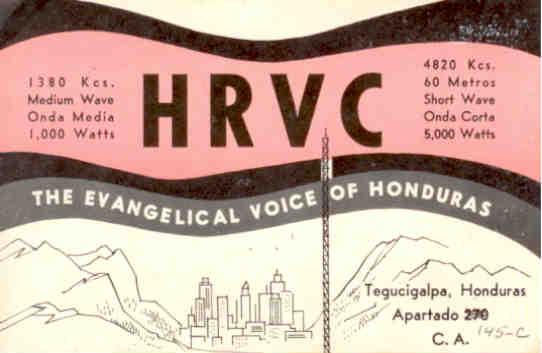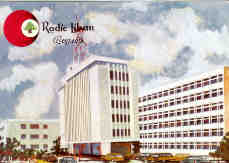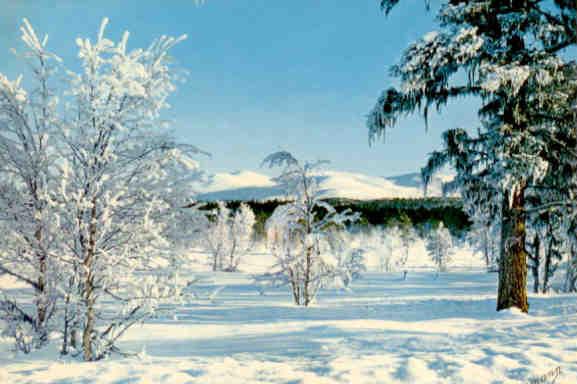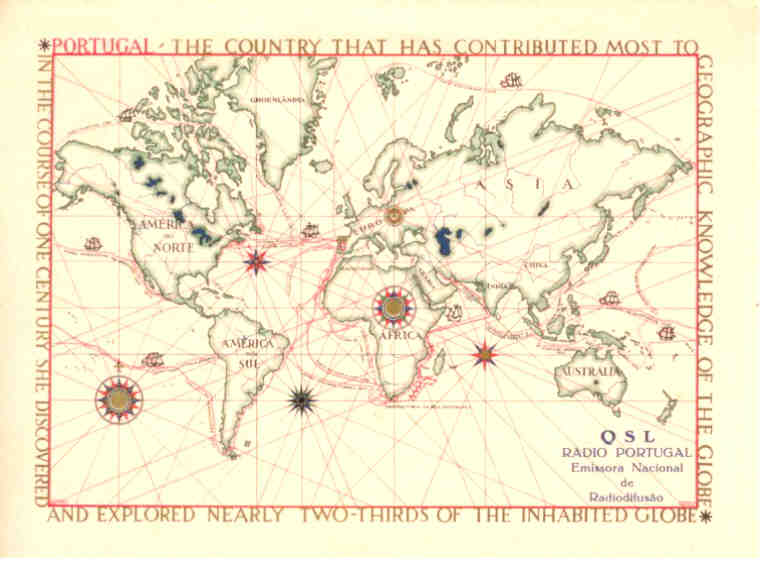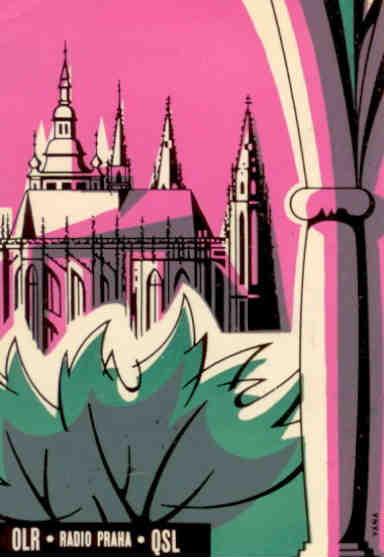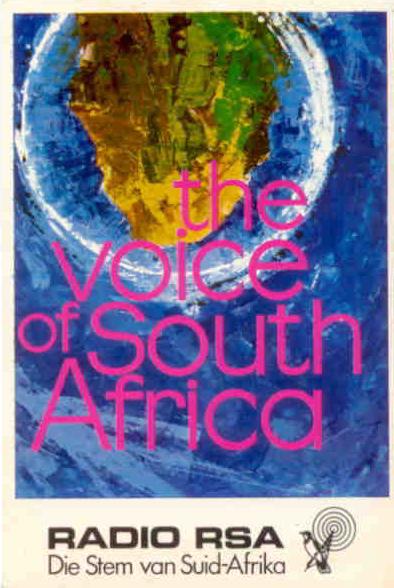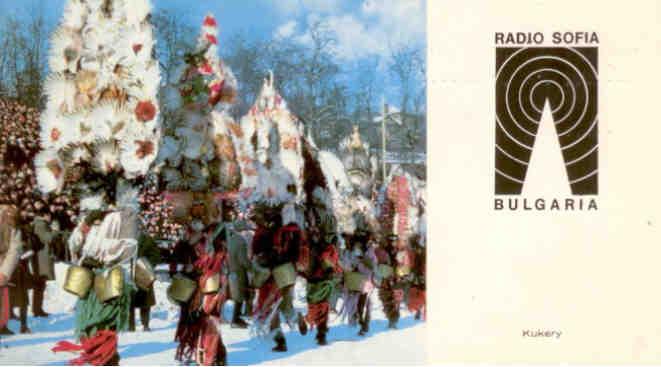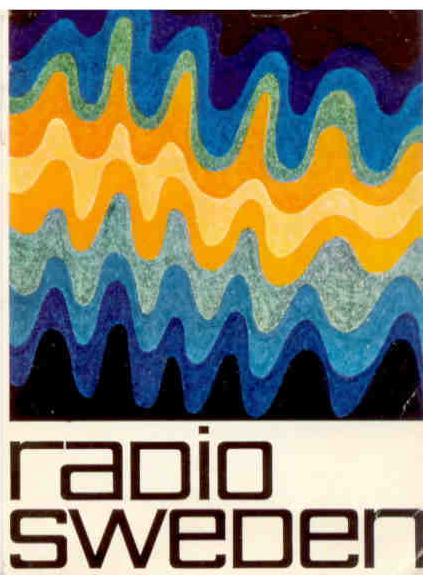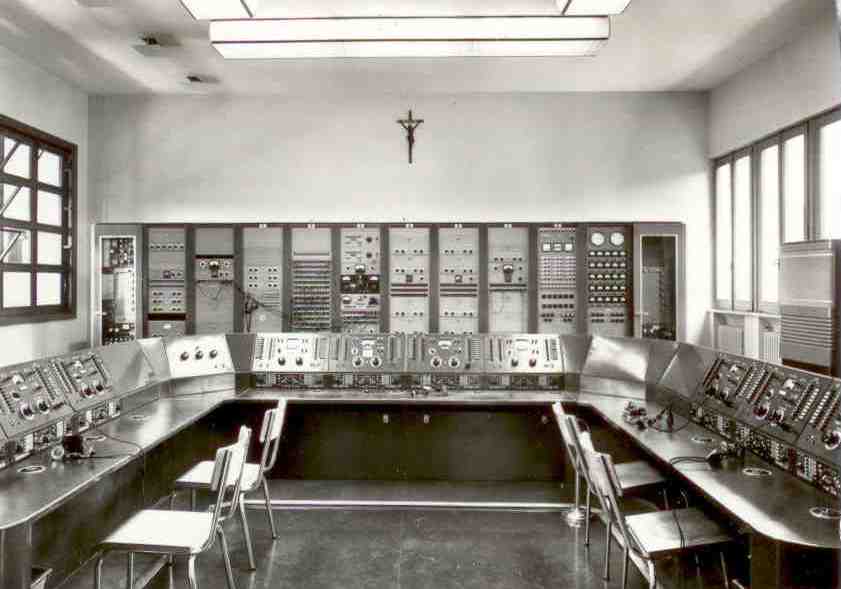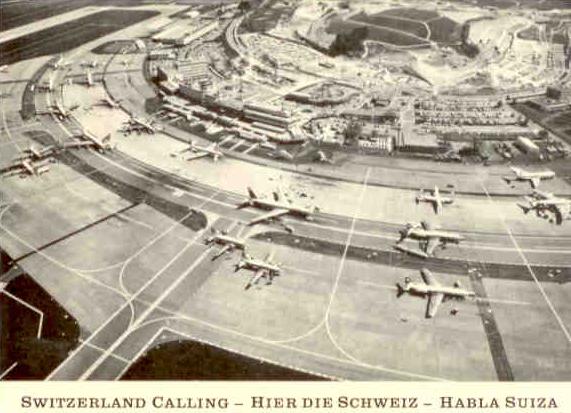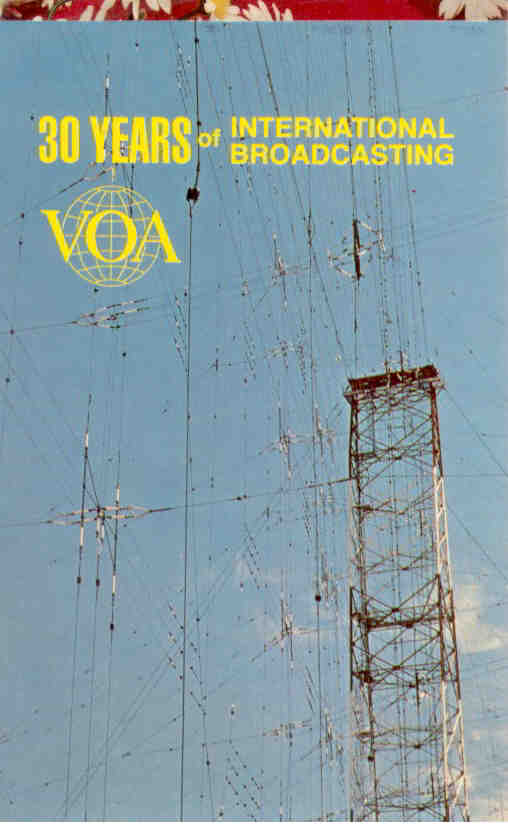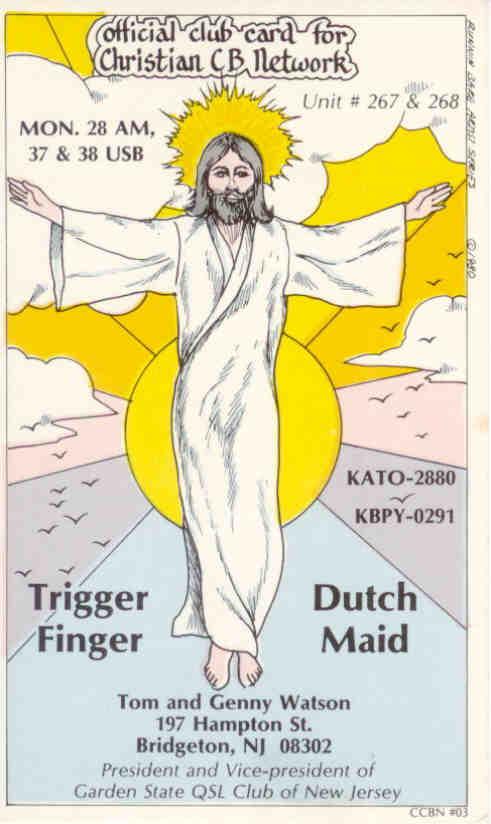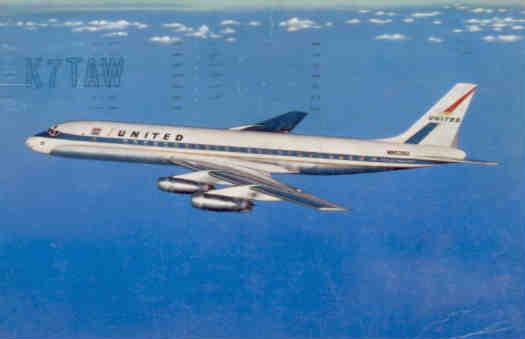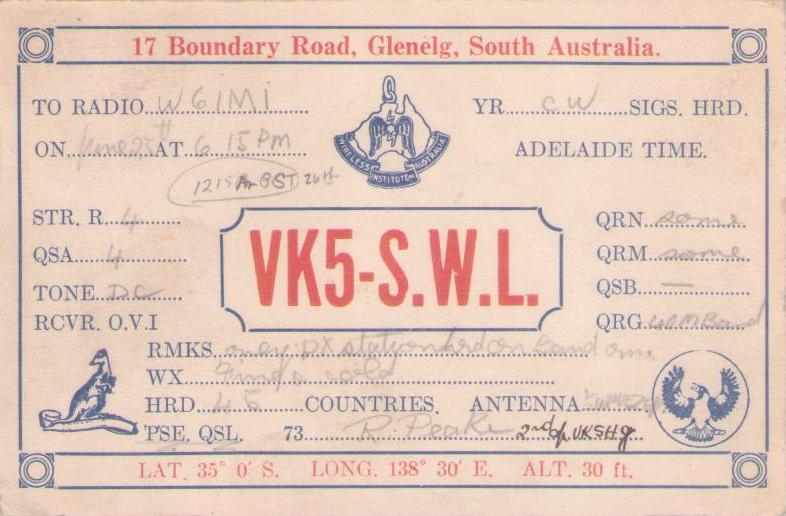-
Trans World Radio (Netherlands Antilles)
Postcard-sized but intended to be mailed in an envelope–and so it was–this card dates from 1971 and has reception details handwritten in. Tape mark on the reverse. Grade: 2
-
Deutsche Welle (Germany)
It’s a postcard, but on very thin paper stock, and would not have well survived the postal system so it was mailed in an envelope. Reception details are written in. Recall that this was a star-crossed year for the Olympics. Grade: 1
-
Australian Broadcasting Commission (Perth, W.A.)
Mailed in 1971 with a postage meter and blue bilingual airmail sticker affixed, the card has reception details typed in. Grade: 1
-
Radio Berlin International DDR
Mailed as a postcard with a postage meter from East Berlin in 1972, the reception details are handwritten into the right spaces. Grade: 1
-
Radio Budapest (Hungary)
From 1972, this is postcard-sized but always meant to be sent in an envelope, which it was. Reception details are on the front, while the reverse explains about the station’s Short Wave Club and DX shows. Grade: 1
-
Radio Kiev (USSR)
Radio Kiev provided this QSL card in 1972, with details typed on the reverse and some marks where the card had slightly stuck to the inside of the envelope they used. No stamp, no address, no postmark, of course. Nice historical relic. 73’s! Grade: 2
-
Radio Kiev QSL Request
Three unused cards are available. Self-addressed (but not stamped) to “Radio Kiev, Kiev, Ukrainian SSR” and all in English, they are report templates for anyone receiving Radio Kiev transmissions and wanting to report details in exchange for a QSL reply. Historical relics, indeed. Grades: 1
-
Demands on Augusto Pinochet
In the 1970s if one requested a QSL from Radio Prague, they complied, and also sent this pre-printed postcard which was meant to be returned to Augusto Pinochet in Chile as a symbol of protest. The card goes along with a mimeographed sheet of further explanation (36300009). The card has the mark of a rusty paper clip on the reverse, and the price includes the card and the separate explanation. Grade: 2
-
Demands on Augusto Pinochet – explanation
In the 1970s if one requested a QSL from Radio Prague in Czechoslovakia, they complied, and also sent this pre-printed postcard which was meant to be returned to Augusto Pinochet in Chile as a symbol of protest. The card (36300008) goes along with this mimeographed sheet of further explanation. The card has the mark of a rusty paper clip on the reverse, and the price includes the card and the separate explanation, as you see here. Grade: 2
-
WYFR (Oakland, California)
We honestly can think of no reason why we have a QSL card that has not been filled out, but that’s the case here. It would have been probably from the early 1970s. Grade: 1 (but also consider, it shouldn’t be uncompleted.)
-
ORF (Osterreichischer Rundfunk) (Austria) (not a postcard)
This 4″ x 8.25″ item is not a postcard but rather on thinner gray paper with details typed in red on the reverse. It dates from November, 1971. There’s a minor tape mark on the reverse. Grade: 3
-
Radio Australia
5.25″ x 8″ card, mailed in an envelope, from the Overseas Service of the Australian Broadcasting Commission in Melbourne. Reception details are handwritten. Grade: 1
-
Radio HCJB (Ecuador)
From 1972. Minor tear on right edge. Not mailed as a card, but filled in by station, so it arrived in an envelope. Grade: 3 -
Radio Habana (not a postcard)
Outsized (3.75″ x 8.5″) QSL, technically not a postcard because there is nothing on the reverse, so what you see is what there is. Small abrasion on bottom front. Grade: 2
-
Radio HRVC (Honduras)
From this evangelical station in Tegucigalpa, a nice card from 1972, mailed with stamp but no postmark. Grade: 2
-
Radio Nederland
From 1971, the card was mailed using a postage meter, and has reception details typed on the reverse. Grade: 1
-
Radio Norway
The front of this completed card is in great condition but the reverse is very heavily mottled with age. Mailed in an envelope in 1971, it has reception details typed in. Grade: 3
-
Radio Portugal (not a postcard)
Oversized (5.75″ x 7.75″) card that might have been a postcard but was mailed in an envelope. It has two tape marks on the reverse. There was a pre-printed area to enter reception details, but the station used a very large rubber stamp and entered the information there. Grade: 3
-
Radio Praha (Czechoslovakia)
Where to start … it’s a proper postcard, hand-signed and with reception details typed in. There are two Czechoslovakian stamps, full Prague postmark, red bilingual par avion rubber stamp, and another rubber stamp commemmorating 35 years of Czechoslovak Foreign Broadcasting (1936-1971). From 1971, a very nice addition to any QSL collection. Grade: 1
-
Radio RSA (South Africa)
From 1971, a completed QSL from Radio RSA, The Voice of South Africa, typed on a postcard but mailed in an envelope so there’s no stamp. Small tape abrasion on reverse. Grade: 3
-
Radio Sofia (Bulgaria)
From 1972, this 3.75″ x 6.75″ card could have been a postcard but instead was mailed in an envelope. Someone sat in that office and typed the full text of each card by hand, leaving only blanks for handwritten reception details. Grade: 1
-
Radio Sweden
Mailed with a postage meter in 1971, the card has blue bilingual airmail sticker affixed, and reception details typed in. A bit of postal battering. Grade: 2
-
Radio Vaticana (Vatican City)
You need to be a ham radio hobbyist to appreciate this brilliant (and completed) card. Grade: 2
-
RAI (Italy)
Mailed with a postage meter in 1971, signed and with all reception details. Grade: 1
-
Switzerland Calling (SBC)
Mailed in 1971 with a postage meter, the card is signed and has reception details typed in. Interesting choice of photos for the front. Grade: 2
-
Voice of America
This blank QSL card from the 1970s (30th anniversary of the station) is mis-registered as you can see from the partial red strip across the top edge. For once, it’s not our scanner causing the problem. The reverse is similarly cut off on one side, but that’s how the card came. Grade: 1 -
Christian CB Network
Three of these are available. The size of a postcard, they have nothing on the reverse. Grades: 1
-
Voice of America – Tripulacion del Apolo 16
We need to explain this, without actually knowing if our explanation is correct or not. Voice of America during the 1960s and 1970s made every effort to engage its international listeners. Coming at the same time as America’s space programme, it appears that VOA created a club (“Club de Oyentes … Unidos por la Verdad”) and issued membership cards. So this otherwise unused postcard has astronauts on the front (code 36300030A), and some information in Spanish on the back, along with a plastic membership card taped on (code 36300030B). We suppose any listener could just write in and join–a common practice for shortwave radio back then. Strictly speaking this is not a QSL, but close enough. Despite the aging tape, we will call this Grade: 1
-
Voice of America – Tripulacion del Apolo 16 (reverse)
We need to explain this, without actually knowing if our explanation is correct or not. Voice of America during the 1960s and 1970s made every effort to engage its international listeners. Coming at the same time as America’s space programme, it appears that VOA created a club (“Club de Oyentes … Unidos por la Verdad”) and issued membership cards. So this otherwise unused postcard has astronauts on the front (code 36300030A), and some information in Spanish on the back, along with a plastic membership card taped on (code 36300030B). We suppose any listener could just write in and join–a common practice for shortwave radio back then. Strictly speaking this is not a QSL, but close enough. Despite the aging tape, we will call this Grade: 1
-
United Airlines, DC-8 Jet Mainliner (N8028U) – K7TAW
The more research like this that we do, the more we notice little ironies and unexpected twists. This Douglas DC-8-21 was manufactured in 1960. The really bumpy ride started in 1978 when it went over to EgyptAir. Finally, it was broken up in 1980. We have two of these cards–issued by the airline–available. The one in the scan is unused with a small smudge on the reverse (Grade: 2, $4). The other was mailed in 1962. It has a stamp and full US postmark, but as it was used as a QSL ham radio card, it also has call letters of that station prominently on the front (Grade: 4, $2).
-
VK5-S.W.L. (Australia)
Mailed in 1934, with stamp and postmark. Either the sender or the receiver added a short extra note on the reverse. Nice for QSL postcard collectors. Grade: 2

